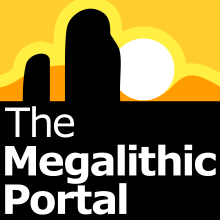Gail Higginbottom writes: Hot on the tail of our paper "Origins of Standing Stone Astronomy in Britain: new quantitative techniques for the study of archaeoastronomy (JAS)", come our newest findings through the application of our new statistical test that enables the quantitative determination of astronomical connections of stone circles.
This time in ENGLAND. The paper is called Connections: the relationships between Neolithic and Bronze Age Megalithic Astronomy in Britain and has been submitted to the European Society for Astronomy in Culture (SEAC) for consideration for inclusion in the refereed conference proceedings "The Materiality of the Sky", SEAC 2014, co-hosted by the University of Malta and Heritage Malta. A draft may be viewed or downloaded at the following link.
Connections: the relationships between Neolithic and Bronze Age Megalithic Astronomy in Britain by Gail Higginbottom and Roger Clay
https://www.academia.edu/12629072/Connections_the_relationships_between_Neolithic_and_Bronze_Age_Megalithic_Astronomy_in_Britain
It has already been empirically verified that for many Bronze Age monuments erected in Scotland between 1400-900 BC, there was a concerted effort on behalf of the builders to align their monuments to astronomical bodies on the horizon. It has also been found that there are two common sets of complex landscape and astronomical patternings, combining specific horizon qualities (like distance and elevation) with the rising and setting points of particular astronomical phenomena.
However, it has only been very recently demonstrated by us that that the visible astronomical-landscape variables found at Bronze Age sites on the inner isles and mainland of western Scotland were first established nearly two millennia earlier, with the erection of the mooted first standing-stone 'great circles' in Britain: Callanish and Stenness of Scotland (see G. Higginbottom, and R. Clay, ‘The Origins of Standing Stone Astronomy in Britain’ submitted to Journal of Archaeological Science & available on academia.edu). In this paper we demonstrate the connection between all of these monuments and the large Late Neolithic circles south of Scotland, namely those of Castlerigg and Swinside in Cumbria, England.
Something is not right. This message is just to keep things from messing up down the road
